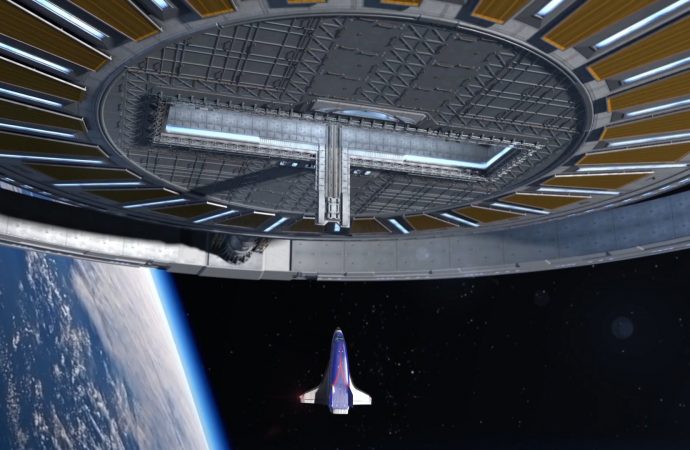Since the end of the Apollo-era, one of the main goals of NASA, Roscosmos and other space agencies has been the development of technologies that will enable a long-term human presence in space.
These technologies will also help when it comes time to mount renewed missions to the Moon, to Mars, and other locations in the Solar System. Over the past few decades, these efforts have yielded Mir and the International Space Station (ISS).
In the coming years, these efforts will also lead to the Lunar Orbital Platform-Gateway and commercial space stations – like the Bigelow B330. And if private aerospace companies like the Gateway Foundation get their way, we’ll also have a spaceport in orbit around Earth. The company recently posted a video showing exactly what this rotating wheel space station will look like, and how companies like SpaceX could help build it.
The company’s concept is known as the Gateway, a rotating space station based on designs proposed by German rocket scientist and space architect Werner von Braun. These designs were featured in a series of articles in the national magazine Collier’s during the 1950s titled, “Man Will Conquer Space Soon!” For this reason, the company has named their proposed design the Von Braun station.

This concept is actually quite time-honored. Von Braun’s own design built on previous proposals, the earliest of which was made by Russian scientist Konstantin Tsiolkovsky in 1903. The concept was beautifully illustrated in Stanley Kubrick’s 2001: A Space Odyssey, which was co-written by famed scientist and futurist Arthur C. Clarke (and based on a short story of his titled “The Sentinel“).
In all cases, the general concept involves a rotating wheel station in orbit of Earth, which would establish a human presence into space while at the same time providing artificial gravity for its inhabitants. This is an important aspect of proposed spaceflights that will take astronauts to locations in deep-space, such as Mars and farther into the Solar System (and possibly beyond).
Given the effects of long-term exposure to microgravity, which were extensively documented in NASA’s recent Twin Study, mission planners have been looking for ways to mitigate them. The study consisted of ten separate investigations into the long-term effects of microgravity on humans, using twin astronauts Scott Kelly and Mark Kelly as test subjects.
After spending over a year in space, the study teams noted a number of significant changes between Scott Kelly and his brother. While he experienced the same loss of muscle mass and bone density as other astronauts who spent extended periods of time aboard the ISS, there were other changes that made adapting to life on Earth again very difficult.
Continue reading on Universe Today

































Leave a Comment
You must be logged in to post a comment.